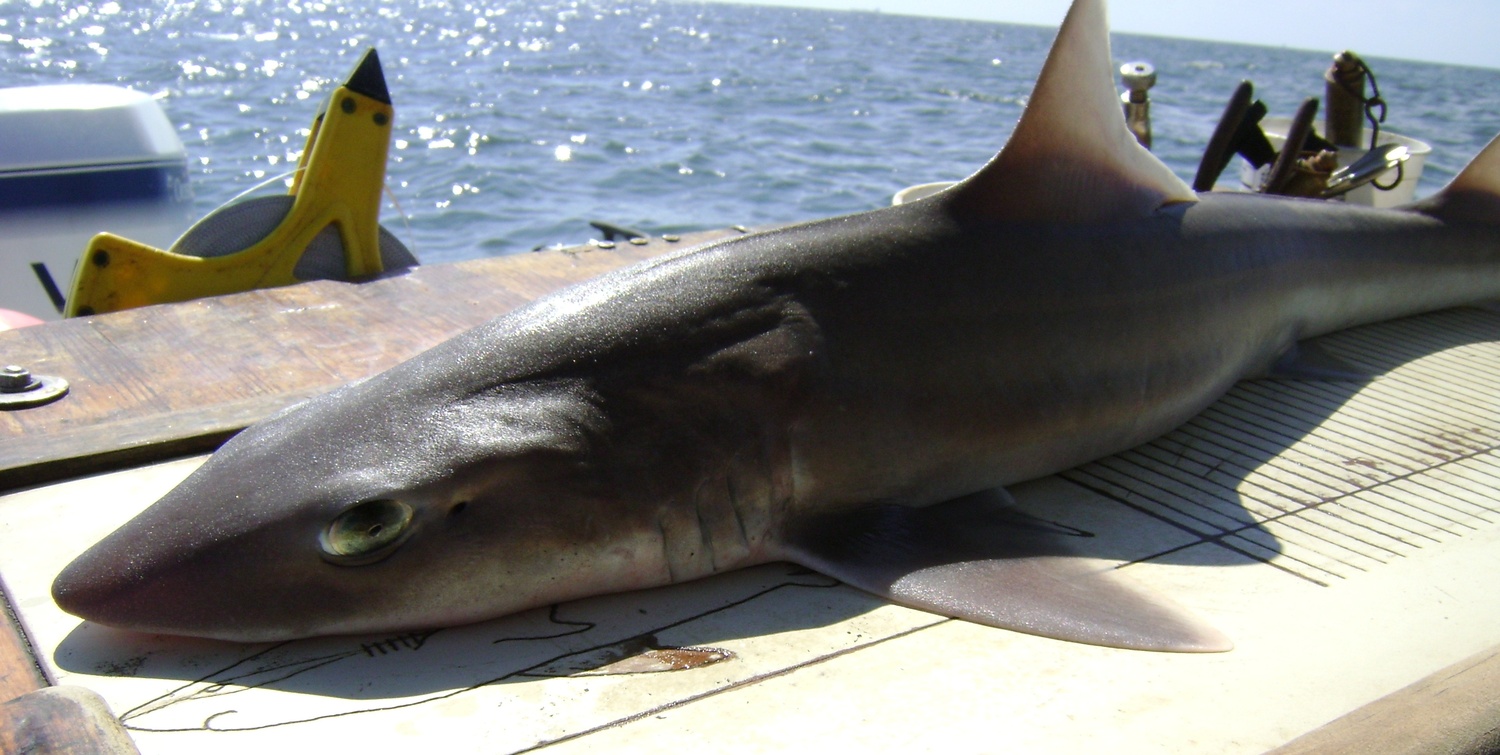Sharks are known for their ability to follow a scent in the water to their next meal - and now researchers in Florida have discovered how they do it.
Writing in Current Biology, Jayne Gardiner at the University of South Florida and Jelle Atema at Woods Hole Oceanographic Institute showed that sharks are able to detect very small delays in a scent reaching each nostril - and it's this, rather than the actual concentration of the chemical, that gives them their sense of direction.
 Most species that rely on scent are equipped with stereo sensors - 2 antennae on an insect or 2 nostrils on a dog for example. It's long been assumed that this means species can home in on the source of a scent using the concentration as a guide - if the scent is stronger on the left than the right, they simply turn 'into' the concentration gradient.
Most species that rely on scent are equipped with stereo sensors - 2 antennae on an insect or 2 nostrils on a dog for example. It's long been assumed that this means species can home in on the source of a scent using the concentration as a guide - if the scent is stronger on the left than the right, they simply turn 'into' the concentration gradient.
In reality, concentration gradients are rarely, if ever, that simple. When dispersed in air or water, chemicals are very unlikely to form a uniform gradient - instead existing in whirls or vortices, with peaks of concentration sometimes a long way from the source. This means that following a concentration gradient alone is likely to lead you in circles - not an efficient way to hunt.
Working with the smooth dog shark, Mustelus canis, the researchers introduced a scent to each nostril in controlled concentrations and with controlled time delays. They found that the timing of the pulses was most important, as the sharks would turn towards the first pulse, even if the second was of higher concentration. This seemed to break down when the delay was too large - over one second and the shark was just as likely to turn either way. This means that the sharks will weave from one side to the other, following the average concentration gradient without being waylaid by the small local concentration changes.
The researchers now want to follow this up, and see if wider spaced nostrils give a shark greater accuracy at higher speeds. Hammerhead sharks, with their distinctive flattened heads known as cephalofoils, have much greater separation between nostrils, so even though their olfactory organs are just as sensitive as other sharks, they may be better able to detect these time differences, and so hunt more efficiently.
This finding also has some very interesting other applications - it can be applied to underwater steering algorithms to allow unmanned robotic craft to quickly locate the source of a chemical, such as an oil leak, underwater.










Comments
Add a comment